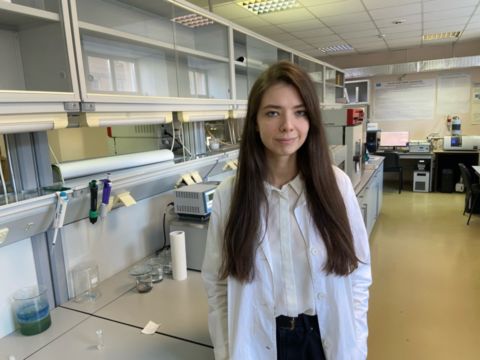SUSU students and scientists developed an additive to the composition of electrodes, using which hazardous substances can be detected in food and water. The new electrode components are non-toxic and their production is cheap, and that reduces the cost of water analysis by 2-3 times.
This research is held within the frameworks of the New Non-conventional Materials strategic project under the Priority 2030 program, aimed at solving the tasks of the Science and Universities National Project.
The procedure of substance detection using modern methods is an expensive process that also requires much time. Thanks to the physical and chemical properties of the additive, the use of electrodes can become an excellent alternative to chromatographic and spectrometric methods of studying the electrochemical composition of food and water.
The electrode designed by the scientists from the SUSU Institute of Natural Sciences and Mathematics was modified using a material based on titanium dioxide and polytriazinimide, obtained by a simple hydrothermal method. By now, the first batches of the material samples have been produced and their physical and chemical properties are being studied.
"These samples are semiconductor materials which (if we look at them under a microscope) are shaped like rice grains with the average length of 200 nm. The obtained results could be used as a grounds to create a full-scale platform for detecting toxic agents in water and food," said participant of this development, 4th-year student of the SUSU Department of Ecology and Chemical Engineering Valeriia Zakharchenkova.
The produced material is used as a special coating for the electrodes which are mounted on a device called potentiostat, designed for studying the electrochemical properties. All data obtained with this device are then processed by a computer to calculate the concentration of analytes, and the degree of toxicity and safety of a substance.
To study the physical and chemical composition and the electrochemical properties of the samples, a wide range of equipment provided by the SUSU Nanotechnology Research and Education Centre is used. The morphology and the elemental composition are determined using a scanning election microscope, and the structural characteristics are studied by the method of X-ray phase analysis using an X-ray diffractometer.
By today, the method for detecting fipronil, and its toxic metabolite fipronil-sulfone, has been developed. Electrodes can also be used to detect other toxic substances in food and water.
The project’s potential was confirmed by the jury of the UMNIK contest, where Valeriia Zakharchenkova presented the idea of the additive development. The student became the winner of the contest and was awarded 500 thous. roubles for the project implementation.
"Anyone who is willing to work hard can become a participant. Don’t be scared to file applications. Even if your development doesn’t get accepted, you will have a chance to upgrade it and present it next year," shared the student.
South Ural State University is a university of transformations, where innovative research is conducted in most of the priority fields of science and technology development. In accordance with the strategy of scientific and technological development of the Russian Federation, the university is focused on the development of big scientific interdisciplinary projects in the field of digital industry, materials science, and ecology. In 2021 SUSU became the winner in the competition under the Priority 2030 program. The university acts as a regional project office of the World-class Ural Interregional Research and Education Centre (UIREC), which is aimed at solving the tasks of the Science and Universities National Project.
Organizer of the UMNIK contest in the Chelyabinsk Region: monitoring company in the Chelyabinsk Region, OOO "Yuzhno-Uralskaiia kompaniia Innovatsionnykh Tekhnologiy" (South Ural Company for Innovative Technologies).
Kseniia Pavlova +7 906-870-21-56, ksesha952[at]gmail[dot]com
VK group: https://vk.com/fasiechelyabinsk
Program's official website: https://umnik.fasie.ru/chelyabinsk
Mass media about us:
URA.RU: Residents of Chelyabinsk Will Check Potatoes for Toxicity in a New Way
Read our news:




